Lesson summary
How much does Western Australia actually recycle their beverage containers? By developing their skills of converting between common metric units of measurement students can find out just how the numbers add up and measure the impact of the Containers for Change initiative.
Learning intentions:
Students will...
- understand the impact of recycling on the reduction of waste.
Success criteria:
Students can...
- recognise units of mass
- convert between grams, kilograms and tonnes
- apply knowledge of division to identify the number of containers required to produce a specific weight
- understand the quantities of containers being recycled.
Lesson guides and printables
Curriculum links
Select your curriculum from the options below.
Lesson details
Skills
This lesson is designed to build students’ competencies in the following skills:
- critical thinking
- collaboration
- curiosity
- reflection
Curriculum Mapping
Western Australian Curriculum - Year 5, Mathematics
- Choose appropriate units of measurement for length, area, volume, capacity and mass (ACMMG108)
Australian Curriculum - Year 5, Mathematics
- Students choose appropriate metric units when measuring the length, mass and capacity of objects; use smaller units or a combination of units to obtain a more accurate measure. (AC9M5M01)
General capabilities: Numeracy, Personal and Social Capability
Cross-curriculum priority: Sustainability
Relevant parts of Year 5 achievement standards: By the end of Year 5, students use place value to write and order decimals including decimals greater than one. They choose and use appropriate metric units to measure the attributes of length, mass and capacity, and to solve problems involving perimeter and area.
Choose appropriate units of measurement for length, area, volume, capacity and mass (ACMMG108)
UN Sustainable Development Goals
UN SDG 12: Ensure sustainable consumption and production patterns
Target 12.2: By 2030, achieve the sustainable management and efficient use of natural resources
Resources Required
- aluminium can
- calculators for each student
- digital scales, able to weigh light items in grams
- glass bottle (e.g. glass juice bottle around 600ml)
- HDPE beverage bottle (i.e. frosted or opaque plastic)
- liquid paperboard container (e.g. milk carton)
- PET drink bottle (e.g. 600ml soft drink bottle)
- steel beverage can (these are commonly used for coconut water)
- Student Worksheets: The Magnitude of Recycling and Adding to Change (one per students)
- Reference Sheet: Reading Very Large Numbers (to display for students)
- Reference Sheet: Converting Mass Units (to display for students)
- Reference Sheet: Total Weight of Material Types Processed by RPOs (to display for students)
Additional Info
Level of teacher scaffolding: Low - skills required for independent activities are modelled explicitly before students begin their work. Some support may be required for those who find mathematical concepts challenging to understand.
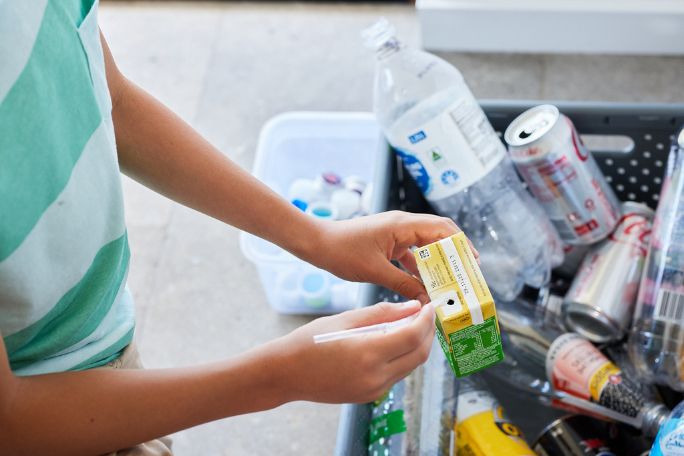
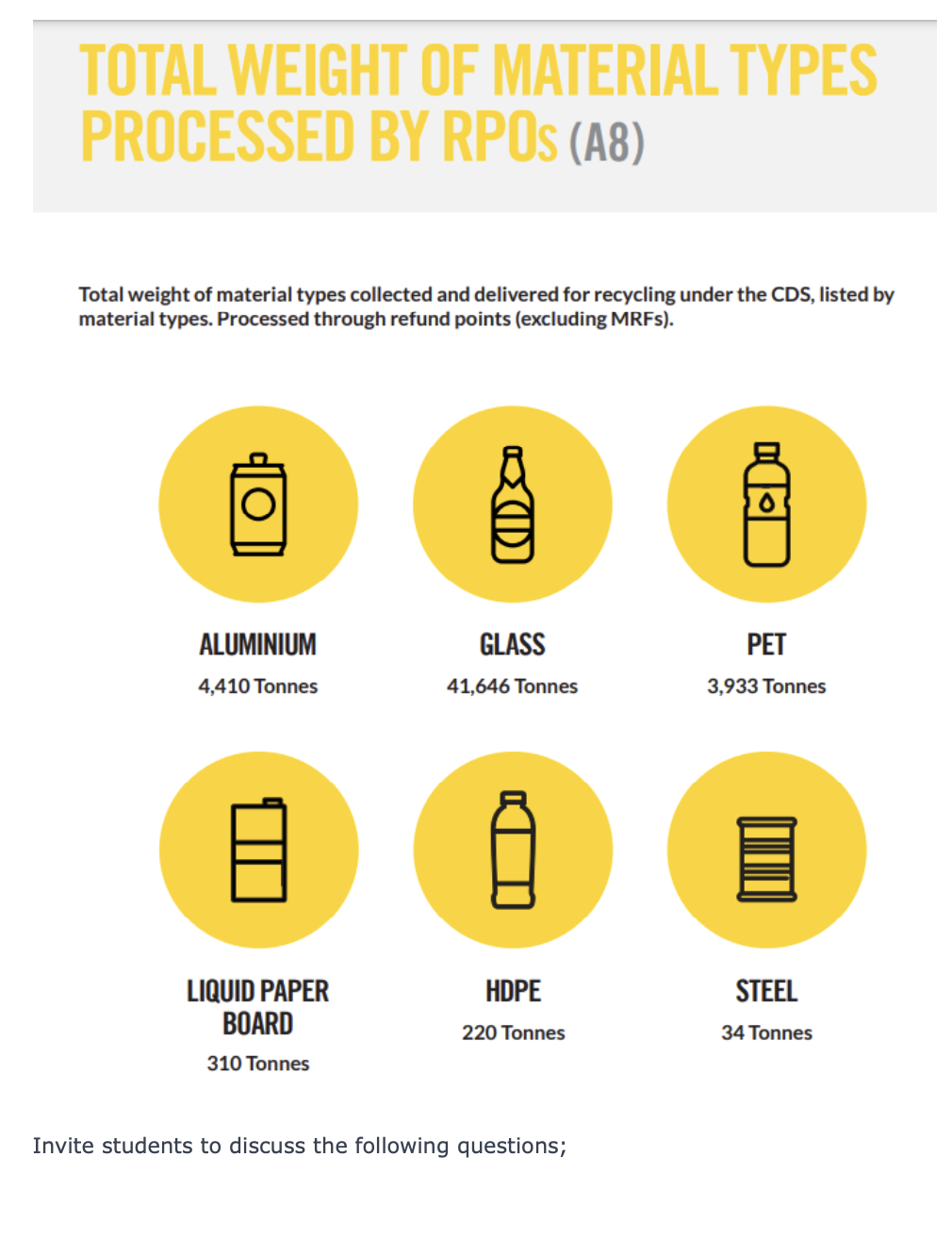
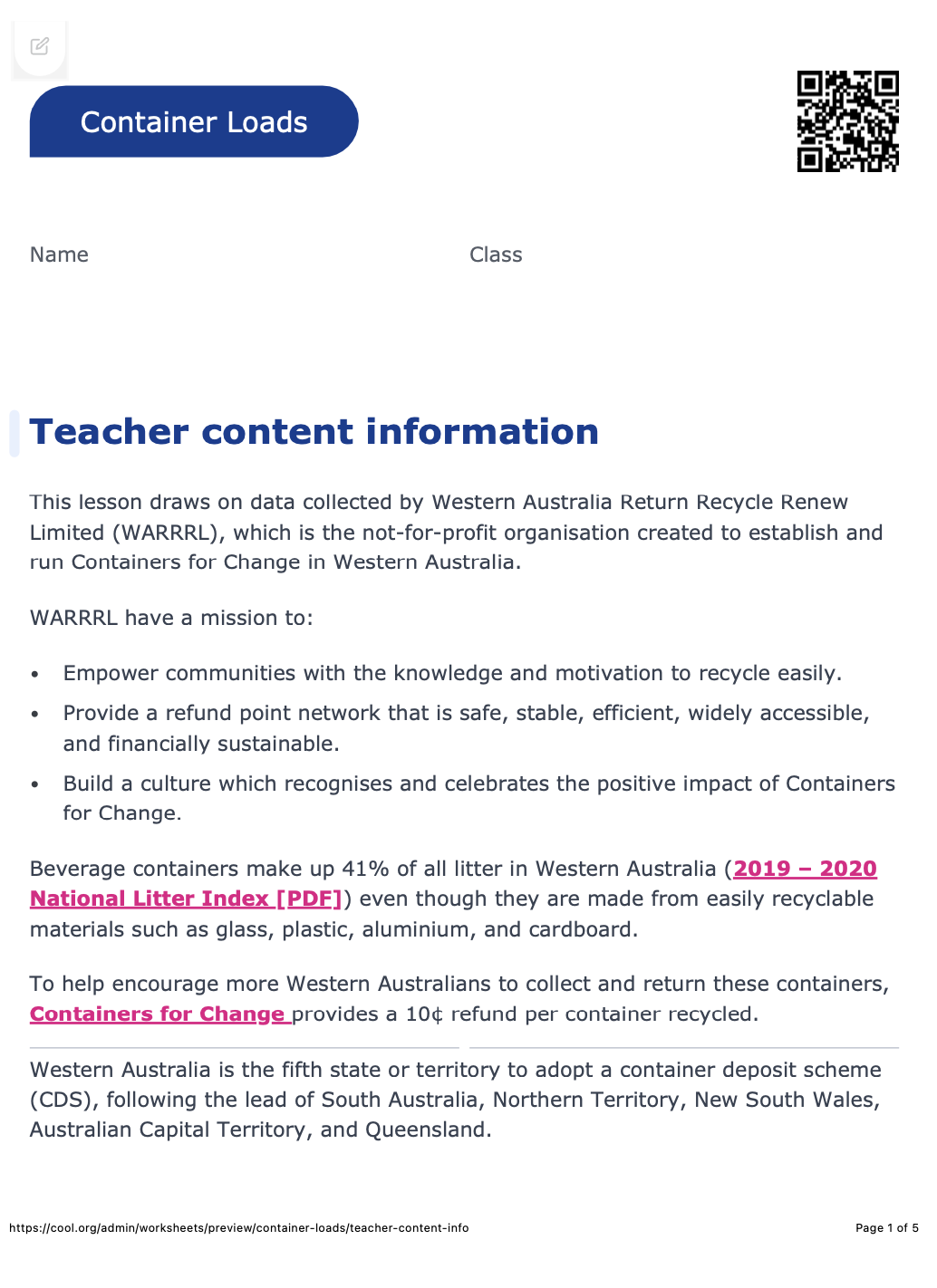
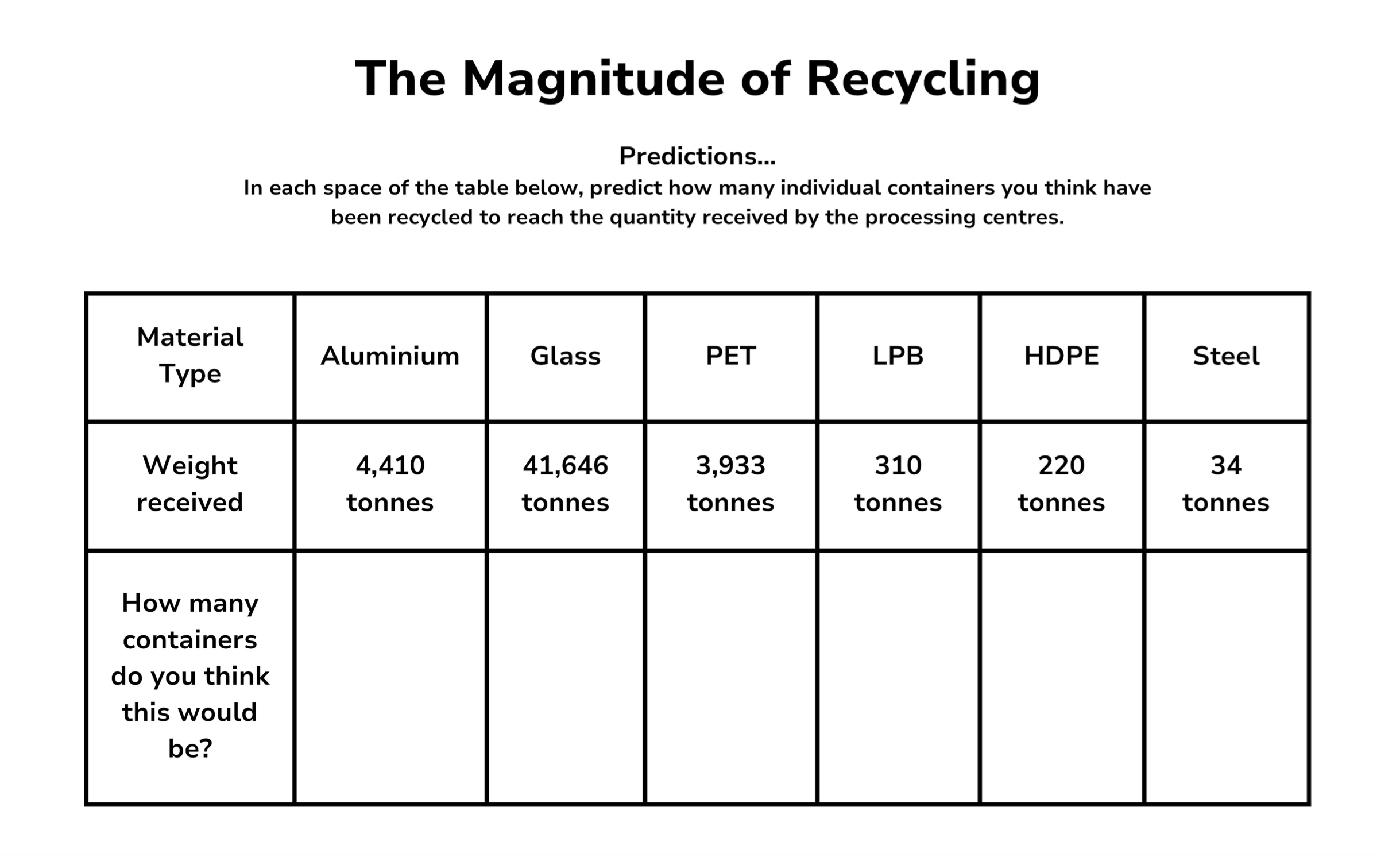
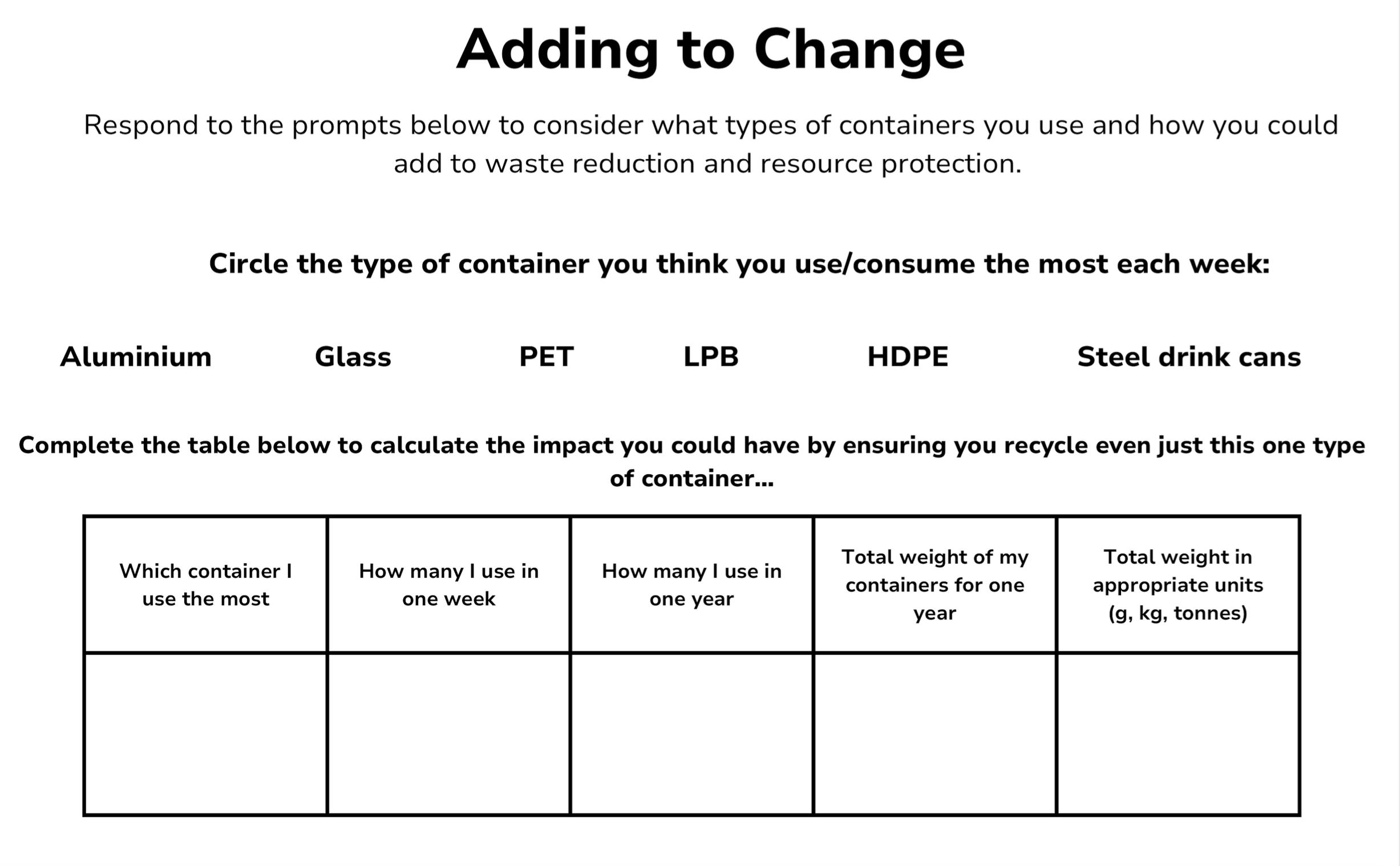
Welcome back!
Don't have an account yet?
Log in with:
Create your free Cool.org account.
Many of our resources are free, with an option to upgrade to Cool+ for premium content.
Already have an account?
Sign up with:
By signing up you accept Cool.org's Terms and Conditions(Opens in new tab) and Privacy Policy(Opens in new tab).